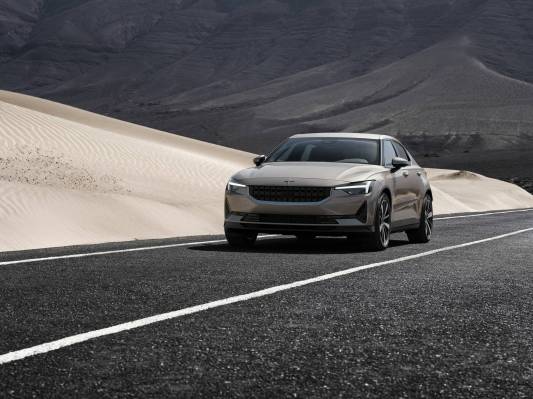Apple MacBook Air 15-inch review: it’s not what you think
The 15-inch MacBook Air might have a small target demographic, but it's nearly the perfect laptop for them.
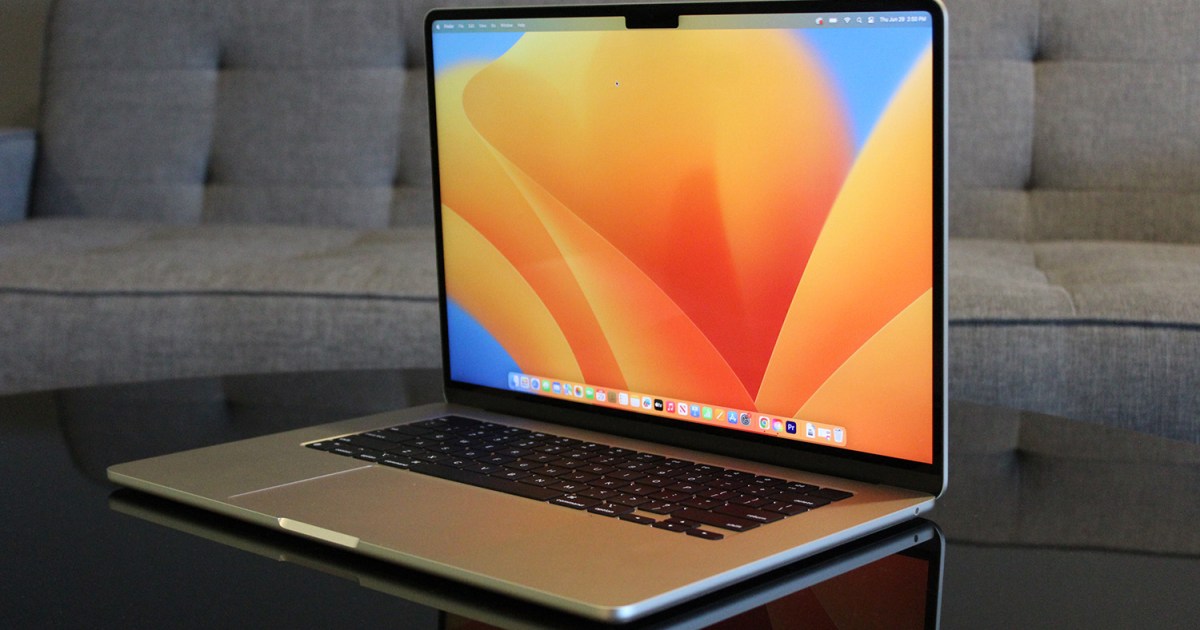
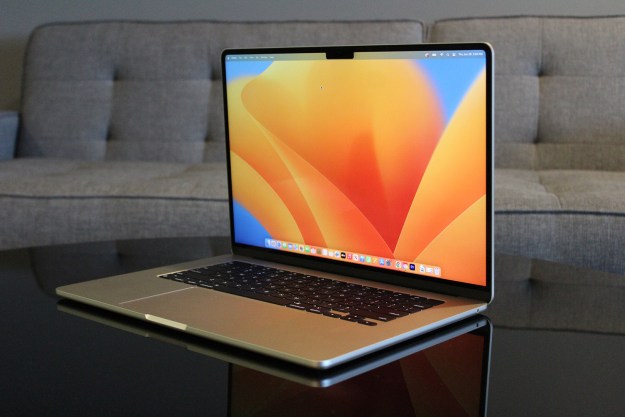
MacBook Air 15-inch
MSRP $1,299.00
Pros
More screen! Excellent speakers Long lasting battery Shockingly thin Extra performance is welcomeCons
Only supports one external displayThe 15-inch MacBook Air is for exactly one type of person.
It’s not for creative professionals sitting in front of Premiere all day. It’s not for college students lugging a backpack across campus. It might not even be for the remote worker building out a work-from-home workstation.
Instead, it seems to have been designed solely for those potential MacBook buyers who prefer a bigger screen, but don’t need the extra performance that comes with a proper MacBook Pro. That’s it. We can debate about how big of a demographic that is, but if you do happen to identify with it, the 15-inch MacBook Air does the job brilliantly.
Design
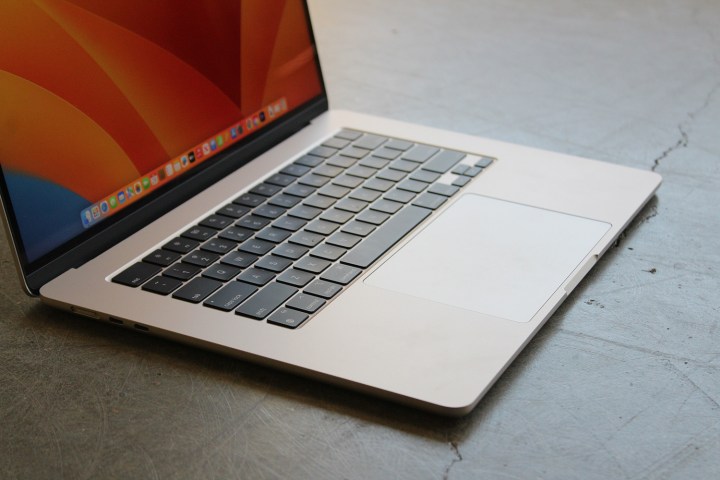
In terms of design, the 15-inch MacBook Air is identical to the 13-inch MacBook Air M2, which was originally introduced just a year ago. It has the same flat panels, narrow bezels, notch, larger function row of keys, and thin profile. It’s still a design that looks and feels modern, especially compared to the M1 MacBook Air that Apple still sells.
So, it’s totally the same. And yet, it feels rather different to use in practice. The difference between a 13-inch and a 15-inch laptop might sound small on paper, but remember, that’s a diagonal screen measurement. In terms of both overall dimensions and pixels, it’s a new experience. A 16:10 aspect ratio screen at a larger size makes for a dramatic increase in screen real estate, both in terms of height and width.
It’s significantly larger than even the 14-inch MacBook Pro. To put things in perspective, the screen of the 14-inch MacBook Pro falls under the top menu bar of the 15-inch MacBook Air. That’s more space for your webpage, spreadsheet, illustration, or video project. And it does make a difference, especially when using a complex piece of software with lots of additional menus.
You just can’t get this thin without the insane efficiency of Apple Silicon in a fanless chassis.
If you’ve been spending a lot of time on a smaller laptop recently, the difference will be stark. And I’m guessing you’ll prefer the bigger screen.
And it should be noted, that at 0.46 inches thick, this is the thinnest 15-inch laptop ever made. Apple does this without the body feeling flimsy or flexible, of course, and even though it’s slightly thicker than the 13-inch MacBook Air, that profile at this screen size is astonishing. The 15-inch Surface Laptop 5 is the only laptop that comes close, and it’s 0.57 inches. You just can’t get this thin without the insane efficiency of Apple Silicon in a fanless chassis.
But remember, there’s still a tradeoff in portability. The width of the device, in particular, might be the most dramatic difference, especially compared to any of Apple’s 13-inch MacBooks. Don’t worry — it’ll still fit into an average backpack or suitcase laptop pocket. It just might take up more of the coffee shop’s table or dorm room desk.
Performance
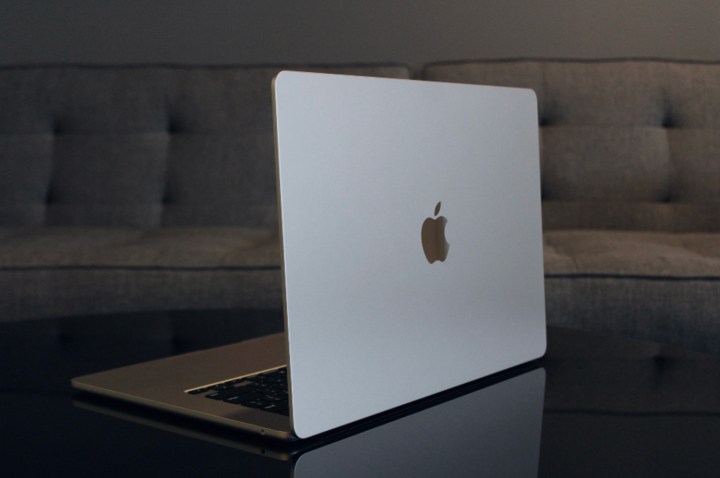
The 15-inch MacBook Air comes with just a single processor option: the M2. This is the configuration of the M2 with 8 CPU cores and 10 GPU cores — the same one that you’ll find in other MacBooks, namely the 13-inch MacBook Air and 13-inch MacBook Pro. So yes, this is the third laptop in Apple’s lineup that uses the exact same chip. The only difference in terms of these processors is that the 13-inch M2 MacBook Air is sold with a weaker version of the M2 with just eight GPU cores to allow Apple to sell it for just $1,099.
It’s worth noting, of course, that just $100 separates the 13-inch MacBook Air and 15-inch MacBook Air when similarly configured. Meanwhile, the 15-inch MacBook Air is priced identically to the notorious 13-inch MacBook Pro — which shouldn’t even exist (but that’s another article entirely). My point is that this is a very full part of Apple’s MacBook lineup, all with very similar levels of performance.
In my testing, the 15-inch MacBook Air lands right where I’d expected, lining up with the other M2 MacBooks nicely. The extra size doesn’t more performance, mostly due to just how thin the device is at just 0.45 inches. In short, bursty benchmarks like Geekbench 6, the M2 holds up well enough, especially in single-core performance, where it’s among the fastest laptops you can buy. I measured a score of 2,606, which is the highest score for a laptop we tested that wasn’t a gaming laptop.
No surprise: the MacBook Air 15-inch is incredibly efficient in battery use.
Of course, graphics tests or even longer single-core tests like Cinebench R23 aren’t as positive. This is one of the only fanless 15-inch laptops out there, and in terms of longer-lasting performance, it can’t handle too much heat. As has been seen on laptops with the M2 chips, Apple lets internal temperatures get worryingly high before throttling back performance. There’s still plenty of room in terms of both GPU and CPU performance between the M2 and the M2 Pro, for example — or even just a Windows laptop with a discrete GPU like an RTX 4050.
Speaking of heat, the surface temperature on the 15-inch MacBook Air can get rather high, especially around the top of the keyboard and the space below the hinge. You won’t notice it while just surfing the web, but if you’re running some heavy applications, it’s definitely uncomfortable.
Raw performance has never been the point of the MacBook Air, though — it’s efficiency. And no surprise: the MacBook Air 15-inch is incredibly efficient. When you aren’t running all-core benchmarks or exporting timelines, the laptop stays remarkably cool to the touch. And, of course, it’s always completely silent.
The efficiency is most felt in battery life though. Like every other Apple Silicon MacBook, the 15-inch MacBook Air gets astounding battery life. On a light load of web browsing in Chrome, the laptop lasted 18 hours and 48 minutes. That’s beyond even the 18 hours Apple promises you. Of course, if you’re running a heavier applications, you’ll see that battery life dip quite a bit. But for many of the type of folks this laptop was designed for, it’s the kind of laptop that’ll you throughout a full work day and well into the next one.
Display, webcam, and speakers
The 15-inch MacBook Air obviously uses a new panel, but it shares a lot in common with the panel used in the 13-inch MacBook Air. It has a higher 2880 x 1864 resolution, but it has the exact same 224 pixels per inch. So, although it’s bigger, it’s every bit as pixel-dense. Of course, this is a standard LED IPS display, so it doesn’t have the same benefits as Apple’s XDR mini-LED panels. Those are still exclusive to the 14-inch and 16-inch MacBook Pro. The main thing you’re missing out on with LED is HDR. Those mini-LED screens peak at 1,200 nits of brightness with HDR content, which is exceptionally bright.
The good news, though, is with SDR content, the 15-inch MacBook Air is every bit as vibrant and bright. Apple claims 500 nits of brightness, and I measured 475 nits with my colorimeter. I also measured 90% of AdobeRGB (and 100% sRGB, of course) color space and Delta-E of 1.23. Both are respectable scores and worthy of your photo editing and graphic design projects, especially for a laptop of this price. It’s among the best IPS laptop displays you’ll find.
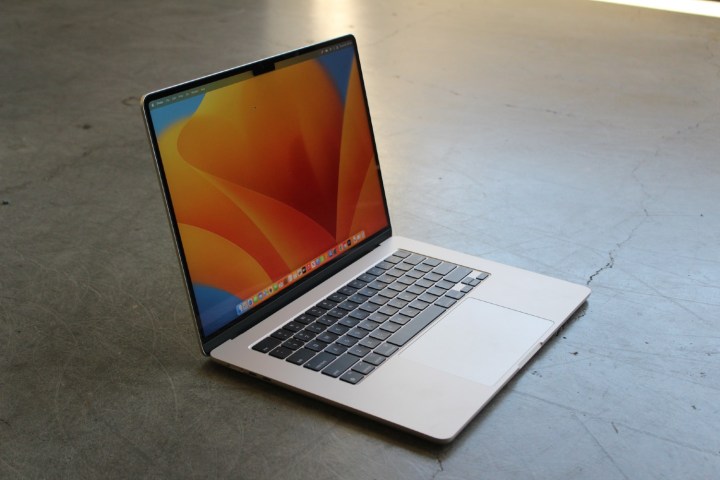
The speakers are another highlight of this machine that far surpasses the Windows competition at this price — or at any price, for that matter. The speakers on the 15-inch MacBook Air really are fantastic, even taking a step up from the 13-inch. It’s astounding, especially considering how thin it is. Side by side, the 14-inch MacBook Pro does sound slightly more robust, but it really is impressive the kind of sound this laptop produces.
The webcam doesn’t quite have that same pedigree. It’s good, but it doesn’t stand out from other 1080p webcams as much as the speakers do. It’s perfectly suitable for daily video calls for work or school, anchored by great speakers and mics.
Ports

For better or worse, Apple has made ports one of the primary distinguishing factors of its “Pro” line. On the one hand, that makes sense. The SD card slot and extra USB-C are handy for professionals who use more high-powered peripherals or need quick access to their camera files.
It’s the external monitor support that’s a point of contention. Plenty of people might not need the extra performance provided by a MacBook Pro but would love to plug in a couple of displays at their workstations. The 15-inch MacBook Air, unfortunately, still limits you to just one. This has always been a limitation of the Apple Silicon MacBook Airs, and remains one on this newest device.
There are ways around that limitation by using a Thunderbolt dock, but ultimately, some people are going to still be convinced to upgrade to the MacBook Pro to get the ports they want. That’s a shame, because it’s a lot more expensive and only worth upgrading for to make use of the extra performance.
When bigger is better (and when it isn’t)

I’m not someone who demands the need for multiple, large monitors to get my work done. I’m content on a 13-inch device and prefer to stay mobile with my work, even if just moving around the house. If you’re like me, you should buy one of the 13-inch MacBook Airs – either the cheaper M1 model or the nicer-looking M2 version. The 15-inch MacBook Air gives that extra screen real estate at the expense of portability and size.
But it’s hard not to also consider the 14-inch or 16-inch MacBook Pro. After all, the 15-inch MacBook Air is the first Apple has offered a larger version of a laptop without also giving it extra performance. The phenomenon of larger but less powerful laptops is not unique to the 15-inch MacBook Air, of course. The same dichotomy exists in laptops like the Surface Laptop 5, Samsung Galaxy Book Pro, and LG Gram. All these designs feature 13-inch and 15-inch size options but are otherwise identical machines.
And in all cases, the 13-inch model remains the more popular option, while the 15-inch is reserved for a more niche audience. I have a hunch that Apple will find an audience for the 15-inch MacBook Air, though. It doesn’t change the game, and in some ways, makes choosing a MacBook even more dizzying. But those looking for exactly this type of laptop will be thoroughly satisfied using this device on the daily.

 FrankLin
FrankLin 












